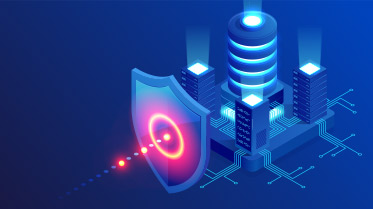March 30, 2022 - by Synoptek
Unforeseen economic disruptions, the never-ending repercussions of the pandemic, and the ongoing turmoil between Ukraine and Russia have all given cyber attackers good reason for conducting sophisticated attacks. Instead of reacting to attacks after they happen, now is a good time for enterprises to update their security plan, proactively reinforce their cybersecurity posture and stay in alignment with changes in the cybersecurity, privacy, and compliance landscape, as they evolve.
To do this successfully, companies need to stay abreast with the latest cybersecurity trends, especially as they shift on a dime. Let’s look at the top cybersecurity trends to be cognizant of in 2022:
1. Ransomware Attacks will Continue to Rise
The continuous success of ransomware attacks across the world has bolstered cyber attackers to continue plotting such attacks on innocent victims. As cloud service models become widespread, ransomware as a service will soon result in a tidal wave of new attacks. In 2022, cyber-criminal groups will move a lot of their targeting to regions that do not have the security resources and regulations to stop them, observing an increase in attacks. To ensure a single attack does not impact hundreds or thousands of endpoints or users, enterprises will have to devise strategies to predict and protect the first line of attack, using modern data science tools and models, and identify potential weaknesses in the enterprise network. They will also have to constantly update patches, monitor remote access, and educate users on how to deal with such attacks.
2. Authentication as We Know It will Change
The surge in cyberattacks coupled with the massive expansion of remote working has paved the way for continuous disruption of cybersecurity. Strong passwords will no longer be sufficient; to tackle the deluge of evolving attack strategies, enterprises will have to revamp their authentication and authorization strategies. Including multifactor authentication, as part of the larger identity and access management procedures, can surely increase security – beyond what passwords can provide. At the same time, in the coming year, newer authentication mechanisms will also develop, allowing enterprises and consumers to reduce dependency on OTPs.
3. Blockchain Security will be Threatened
Enterprises and even consumers have assumed blockchain to be resilient to attacks and breaches, but the coming year is going to prove them all wrong! In 2022, as hackers get increasingly sophisticated in the tactics they use, blockchain security is poised to be threatened. For companies that rely on the technology for digital transactions, supply chain monitoring, and secure data sharing will begin to see attackers use advanced means to infiltrate these networks via peer-to-peer, ledger-based, or smart contract-based attacks. To deal with this level of sophistication, enterprises will need to improve device security, invest in networking monitoring tools, enable better data encryption, and implement secure routing protocols.
4. Cloud Security Attacks will Drive Hybrid Cloud Adoption
Remote working has caused a massive rise in the adoption of cloud apps and tools, making them a popular target for bad actors. As attackers now shift their focus to the cloud, companies will be forced to spread data and assets across multiple environments. With new threats constantly emerging, the hybrid cloud approach will become mainstay, as it will allow companies to better manage and protect their data, while establishing stronger security controls around data that is critical. Since cloud presents a much bigger attack surface, in the coming year, businesses will have to focus on reducing the attack area and containing the impact; this can be done by improving cloud visibility, monitoring user activity, and using tools that can help respond quickly to breaches.
5. Everyone Should Consider a Zero-trust Approach
Gone are the days when access to data and systems were first provided to users, and then security controls were established based on roles and responsibilities. In 2022, one of the most popular cybersecurity trends to hog the spotlight will be zero-trust, especially as the hybrid work model continues to be rampant. Taking the zero-trust approach will allow enterprises to explicitly verify identities, locations, and endpoints and ensure least privilege access to data and assets. By always assuming breach, they can more effectively address the complexity brought about by the hybrid work environment and protect people, data, and endpoints – regardless of where they are located.
Tackle the Latest Cybersecurity Trends
The last two years have been challenging for enterprises on many fronts; although most have successfully managed to bounce back and adapt to the new normal, the constant slew of cybersecurity attacks being planned by hackers has been difficult to cope up with. As new cybersecurity trends shape up each year, it is vital that you engage with a qualified Managed Security Provider who can help you stay a step ahead of these trends. By helping you revamp existing security tools, devise appropriate strategies, and implement necessary controls, a cybersecurity partner can help in implementing a robust security framework, thus successfully safeguarding your business, data, and customers.



